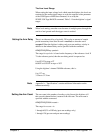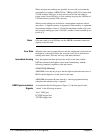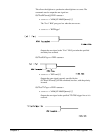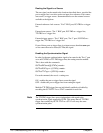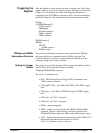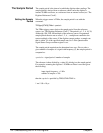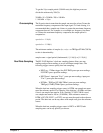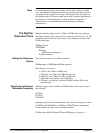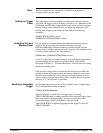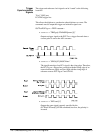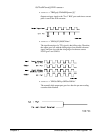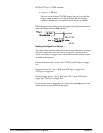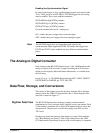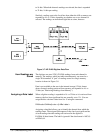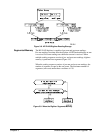
Note It is recommended that pre-arm readings use the faster of the two sample
rates. One additional sample pulse at the pre-arm rate, after the arm occurs,
is required for the sample rate to change. The digitizer does not sample on
this additional pulse. Post-arm sample pulses may be ignored depending on
how fast they occur following the rate change. Refer to Appendix A -
"Specifications", for additional information on dual rate sampling
characteristics.
The Digitizer
Reference Clock
When the digitizer trigger source is TIMer or DTIM (dual rate sampling),
the sample (reading) rate is derived from a reference clock (Figure 3-5). The
commands used to select the clock source and its frequency are part of the
SENSe subsystem:
SENSe[<
chan
>]
:ROSCillator
:EXTernal
:FREQuency <
frequency
>
:SOURce <
source
>
Setting the Reference
Source
The reference source is set with the command:
SENSe[<chan >]:ROSCillator:SOURce <
source
>
The reference sources are:
• CLK10 - the VXIbus 10 MHz clock.
• ECLTrg0 - the VXIbus ECLTRG 0 trigger line.
• ECLTrg1 - the VXIbus ECLTRG 1 trigger line.
• EXTernal2 - the digitizer’s Ext 2 BNC port.
• INTernal - the digitizer’s internal 20 MHz oscillator. This is the
default source.
Specifying the External
Reference Frequency
When the trigger source is TIMer or DTIM, and the clock source is one of
the following:
ECLTrg0
ECLTrg1
EXTernal2
the digitizer processor must be informed of the reference frequency in order
for TRIGger:STARt:TIMer1 or TRIGger:STARt:TIMer2 to generate the
correct sample rate. This is done with the command:
SENSe[<chan >]:ROSCillator:EXTernal:FREQuency <frequency >
124 Understandin
g
the HP E1429 Di
g
itizer Chapter 3




